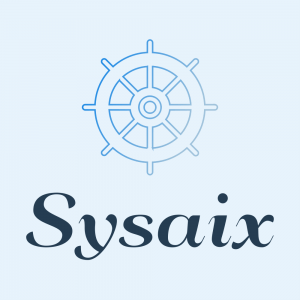Disclaimer
IBM provide the SHOW commands for their own use, for diagnostic gathering. Tivoli / IBM do not support the SHOW commands so it is no use raising problem reports with them if the results are not what you expect. Be aware that some of these commands are resource intensive and cannot be cancelled and some commands will try to fix problems; that is they may UPDATE the TSM database. If possible, try the commands on a test system before you use them in production. In general, you should not run SHOW commands unless you are familiar with that particular command, or TSM support personnel have asked you to run them.
This is not an exhaustive list of SHOW commands because
- I do not know them all
- I have missed out some obscure commands (that is, the ones that I don’t understand)
The list is split into commands issued at the client and commands issued at the server.
Client Commands
Client commands can produce a lot of output that will scroll off the screen, so you may prefer to pipe them into a file. For example SHOW OPTTABLE > output.txt
- SHOW OPTIONS
- Displays the active client options.
- SHOW OPTTABLE
- You can configure a client so it can get its option settings from either the client option file or from the server. This command will tell you which one is in use for this client.
- SHOW SESSION
- Displays capabilities that this client has for this connection to the server. The client and server report and negotiate the capabilities that each has when a session is started by a client to a server. This show command reports the capabilities available by this server and client.
- SHOW TRACEFLAGS
- Use this to determine which trace options could be used for this client.
- SHOW VERSION
- Use this command to find out what release and version of TSM is installed.
- SHOW CLUSTER
- Displays information about the disk mappings in a Windows or a Netware Cluster.
The next five commands all apply to Windows clients
- SHOW PLUGINS
- If you want to use extra capabilities like image backup, then they are provided by ‘plug-ins’. You use this command to find out what plug-ins are available for this client.
- SHOW CACHE
- TSM uses Subfile backups to backup only changed portions of files over slow network links. TSM knows what parts of a file have changed, by storing checksum information in a cache file on the client. This command will display information about the subfile cache, if the client is configured to use subfile backup.
- SHOW SYSTEMOBJECT / SHOW SYSTEMSTATE
- You use these commands to find out what system facilities are installed, and which ones can be backed up with TSM. SYSTEMOBJECT is used for Windows 2000 and XP clients, and SYSTEMSTATE for Windows 2003 clients.
- SYSTEMSERVICES
- For Windows 2003 clients, displays the SYSTEM SERVICES data that is available on this client. Useful to determine which SYSTEM SERVICES files are installed on this Windows client and those that could be backed up.
Server commands
- SHOW TIME
- Simply displays the server date and time.
Current Date and Time on the Server ---------------------------------------- 04/17/2012 11:08:08 UTC (GMT) Date/Time is: 04/17/2012 10:08:08 Last Noted Date/Time is: 04/17/2012 10:45:51 Daylight Savings Time is in effect: YES
- SHOW CONFIG
- This is one of the long running commands that produce lots of output. It actually issues a set of QUERY and SHOW commands then uses these to build a quite comprehensive picture of the state of the server. This command is worth running as a diagnostic data gathering exercise, to be analysed when free time permits.
Commands to help with session or tape drive problems
- SHOW ASQUEUED
- If you have a client session or process stuck, it may be waiting for a drive. You can use this command to see if there are sessions queued waiting for mount points.
- SHOW DEVCLASS
- Is also useful if you have problems with drives. It displays the status of each device class, including the status of allocated drives.
- SHOW MP
- Useful for determining which volume is in-use by a given mount point and other attributes for the assigned mount points
- SHOW ASVOL
- If you are having problems with sessions or processes queued, or waiting for tape volumes, then this command will display the in-memory list of assigned volumes.
.
Commands to help manage the database and recovery log
- SHOW BUFSTATS – TSM 5.x only
- Use this command to see if you need to increase your database buffer pool size.
Example output isDatabase Buffer Pool Statistics: Total Buffer Latch Requests: 184217213 Times Scavenging Required: 1123642 0.61% Times Scavenging by Stealing: 1105210 0.60% Times Scavenging by Waiting: 0 0.00% Times Read Required: 1123574 0.61% Cache Hit Percentage: 99.39%
- SHOW BUFVARS – TSM 5.x only
- This command will display the status of the buffer pool variables and can be used to check for dirty buffer pages.
Example output isDatabase buffer pool global variables: CkptId=1642081, NumClean=32880, MinClean=32784, NumTempClean=32880, MinTempClean=16392, BufPoolSize=32880, BufDescCount=33071, BufDescMaxFree=36168, DpTableSize=49161, DpCount=0, DpDirty=10, DpCkptId=1642081, DpCursor=64, NumEmergency=0 CumEmergency=0, MaxEmergency=0. BuffersXlatched=0, xLatchesStopped=False, FullFlushWaiting=False.The above output shows that there are 10 dirty buffers. You use another undocumented command ‘FLUSH’ to clear out the dirty buffers.
- SHOW CSVARS
- This command shows client and admin schedule variables and statistics. An example is
Max %% Scheduled Sessions : 60 Max Scheduled Sessions : 120 Retain Event Recs : 10 Randomize Pct : 25 Period for sched Query : -1 Max Retries for failure : -1 Time between retries : -1 Scheduling Modes : Any Sch Sessions in use : 0 Schedule Manager Active : TRUE Pending Table is Ready : TRUE Prompter Active : TRUE Command Execution Active : FALSE Timer Active : TRUE Next Execution : 04/17/2012 20:45:00 Next Deadline : 04/17/2012 13:00:00 Event Deletion Active : FALSE Last Event Deletion : 04/07/2012 00:00:00 Randomization Seed : 1794940526 Command Scheduler Active : FALSE Scheduled Commands Running: 0 Last Schedule Index : 8 High Water Sched Index : 9 Client Action Duration : 5 Admin Schedules Running: - SHOW PEND
- Displays the next execution time for client and admin schedules.
- SHOW LVM – TSM 5.x only
- This command shows logical volume manager data, including lots of information about TSM volumes.
LVM fixed storage area capacities: Disk Table area: 14 pages allocated; 39 entries/page; 553 total entries. Using an average disk name length of 20 characters. Copy Table area: 6 pages allocated; 145 entries/page; 870 total entries. DB Logical Partition Table area: 200 pages allocated; 678 entries/page; 135796 total entries; Maximum possible DB LP Table size: 530.5 Gb. LOG 1 Logical Partition Table area: 5 pages allocated; 678 entries/page; 3391 total entries; Maximum possible LOG 1 LP Table size: 13.2 Gb. LOG 2 Logical Partition Table area: 2 pages allocated; 677 entries/page; 1354 total entries; Maximum possible LOG 2 LP Table size: 5.3 Gb. DB Volume Usage: Capacity Active Free Volume Name Meg. Part. Part. Part. Used -------------------------- ------ ------ ------ ------ ------ N:\TSMDB\TSMDB01.DSM 10000.0 2500 2500 0 100.0%% N:\TSMDB\TSMDB02.DSM 10000.0 2500 2500 0 100.0%% LOG Volume Usage Capacity Active Free Volume Name Meg. Part. Part. Part. Used -------------------------- ------ ------ ------ ------ ------ O:\TSMLOG\LOG01.DSM 5000.0 1250 1250 0 100.0%% Disk TableEntries: Disk CT LV Sect Blk Capacity Nmbr Rsdl Copy Stat Err Disk Num Num Name Size Size (blocks) LPs Blks Stat Flag Cnt Name ---- --- ---- ---- ---- -------- ----- ---- ---- ---- --- ------------------- 0 0 LOG 512 4096 1280256 1250 256 Sync 0X30 0 O:\TSMLOG\LOG01.DSM 2 2 DB 512 4096 2560256 2500 256 Sync 0X30 0 N:\TSMDB\TSMDB1.DSM 3 3 DB 512 4096 2560256 2500 256 Sync 0X30 0 N:\TSMDB\TSMDB2.DSM 4 4 DB 512 4096 2560256 2500 256 Sync 0X30 0 Copy Table Status: CT LV Mirror Stat Disk Num Name Count Flag Names --- ---- ------ ---- -------------------------------------- 0 LOG 1 0 O:\TSMLOG\LOG01.DSM(0) 2 DB 1 0 N:\TSMDB\TSMDB01.DSM(2) 3 DB 1 0 N:\TSMDB\TSMDB02.DSM(3) ++++++++ DB Logical Partition Information ++++++++ LV Status: OK Usage: LP CT PP Num Num Num Status ----- ----- ----- ------------------ 0 2 0 Allocated 1 2 1 Allocated - SHOW LVMVOLS – TSM 5.x only
- Displays usage information for the recovery log and database .
DB Volume Usage: Capacity Active Free Volume Name Meg. Part. Part. Part. Used -------------------------- ------ ------ ------ ------ ------ N:\TSMDB\TSMDB01.DSM 10000.0 2500 2500 0 100.0%% LOG Volume Usage: Capacity Active Free Volume Name Meg. Part. Part. Part. Used -------------------------- ------ ------ ------ ------ ------ O:\TSMLOG\LOG01.DSM 5000.0 1250 1250 0 100.0%% - SHOW LVMCOPYTABLE – TSM 5.x only
- This command shows the status of the database and recovery log copy table and is included in SHOW LVM above.
- SHOW DBTXNT
- Use this command to displays the database transaction table. Sample output looks like
Open objects: name ->AS.Segments<- (sp=0) name ->SS.Pools<- (sp=0) name ->SS.Pool.Ids<- (sp=0) name ->AF.Clusters<- (sp=0) Tsn=0:813772319 --> Valid=1, inRollback=0, endNTA=0, State=2, Index=10, LatchCount=0, SavePoint=0, TotLogRecs=0, TotLogBytes=0, UndoLogRecs=0, UndoLogBytes=0, LogReserve=0, PageReserve=0, Elapsed=346279 (secs), MinLsn=0.0.0, MaxLsn=0.0.0, LastLsn=0.0.0, UndoNextLsn=0.0.0, logWriter=False, backupTxn=FalseThis is showing that this transaction has 4 database tables open, that the transaction is valid, and that it is not writing log records.
- SHOW TXN
- Shows statistics for the transaction manager.
- SHOW DBV
- Displays database global attributes.
- SHow DBBACKUPVOLS
- Use this command to get details on the latest full and incremental database backup volumes.
- SHOW LOGPINNED – TSM 5.x only
- You can use this command if your logfile is running out of space. The oldest active record in the log is ‘pinning’ the log. This command will tell you what task owns that oldest record. You could follow this up with
SHOW LOGPINNED CANCEL
which will cancel whatever is holding the pinned record. This is one of those ‘UPDATE’ SHOW commands that you need to use with extreme care, and preferably after advice from Tivoli. However, if your log is rapidly filling up, will you have time to make that support call? It would be best to investigate and test this command before you need to use it in an emergency. The command is only available in TSM version 5.1.7.0 to 5.5.
Example output isDirty page Lsn=4597153.124.2199, Last DB backup Lsn=4596680.43.3348, Transaction table Lsn=4597152.240.3249, Running DB backup Lsn=0.0.0, Log truncation Lsn=4596680.43.3348 Lsn=4596680.43.3348, Owner=DB, Length=194 Type=Update, Flags=C2, Action=ExtInsert, Page=2171054, Tsn=0:818261705, PrevLsn=4596680.43.3137, UndoNextLsn=0.0.0, UpdtLsn=4596680.43.3137 ===> ObjName=AS.Segments, Index=26, RootAddr=14, PartKeyLen=3, NonPartKeyLen=4, DataLen=87 The recovery log is pinned by the last data base backup. Space will not be freed until data base backup is run again.
The command tells you that the log is pinned by a backup.
- LOGV
- You can use this command to display the recovery log global attributes, but it is less obvious what they all mean.
- SHOW LOGstats
- Use this command to see statistics on log usage.An associated command is SHOW LOGRESET This command will RESET the log statistics back to 0.
- SHOW Archives Policy-set Node-name
- Shows archives for the specified node within a policy set
Commands to help with session hangs
- SHOW LOCK
- If your TSM server is running very slow it is worth trying this command. A TSM server uses locks to serialise updates to prevent corruption. You use this command to see what resources are locked.
- SHOW RESQUEUE
- The TSM server monitors resource usage and will cancel any resource users that are holding onto resources for too long. You use the SHOW RESQUEUE command to display the resource queue and it will display information about transactions, locks, and other resources. The only output I have ever seen for this command is
RESOURCETimeout is 60 minutes. Resource list is unlocked. There are current no waiters.
- SHOW SESSION
- Useful for diagnosing hangs or other general session problems while a session is still connected to the server. This is also useful in cases where a session is cancelled or terminated and still appears in QUERY SESSION.
*** Warning *** The SHOW SESSION command can crash a TSM server that is between code levels 5.5 and 6.3 IBM Technote swg1IC82490 refers
- SHOW TXNT
- You use this command to get information about active server transactions. Transactions are the low level operations that actually read or update the database. This command can be useful for diagnosing hangs or other transaction related problems, but the command produces a lot of output, and many of the fields are a bit obscure. Partial output for one single transaction is shown below.
slot -> 51: Tsn=0:822996787, Resurrected=False, InFlight=True, Distributed=False, Addr 3b6458b8 ThreadId=119, Timestamp=05/31/04 09:04:02, Creator=dfmigr.c(1789) Participants=3, summaryVote=ReadOnly EndInFlight False, endThreadId 119, tmidx 0 0, processBatchCount 0. Participant DB: voteReceived=False, ackReceived=False Participant BF: voteReceived=False, ackReceived=False Participant SS: voteReceived=False, ackReceived=False Locks held by Tsn=0:822996787 : Type=34040, NameSpace=32997, SummMode=xLock, Mode=xLock, Key='127.0' - SHow INVObject 0 ObjectId
- Use this command to show an inventory object, reporting its nodename, filespace, management class, and more. This command can be useful if you get errors with objects. For example, when exporting a server you may see a message like
ANR9999D xibf.c(664): Return code 87 encountered in writing object 0.9041317 to export stream. ANR0661E EXPORT SERVER: Internal error encountered in accessing data storage.
The 0. 9041317 is the Object ID. If you use the SHOW command
SHow INVObject 0 9041317
The result below will tell you what the object is
OBJECT: 0. 9041317 (Backup): Node: ACSN08 Filespace: /y2. /msg/rlds/ temp Type: 2 CG: 1 Size: 0.0 HeaderSize: 0 BACKUP OBJECTS ENTRY: State: 1 Type: 2 MC: 1 CG: 1 /y2 : / msg/rlds/ temp This (MC: DEFAULT) Active, Inserted 08/01/03 07:58:58 EXPIRING OBJECTS ENTRY: Expiring object entry not found.
Storage pool and LAN free commands
- SHOW SSPOOL
- Useful for displaying the states and attributes of defined storage pools.
- SHow DAMAGED poolname
- Contributed by Roy Adeyosoye, This command will list out all the files in a storage pool that are marked as damaged. Typical output looks like
Volume ID: 34281, Volume Name: QZ1720 Segment number: 1, Segment start: 1606, Segment Size: 0.85470464 file-name etc.... Found 4349 damaged bitfiles.
To fix them, run an audit command like
AUDIT VOL QZ1720 FIX=YES
- SHOW SLOTS
- This command Will list out the total number of usable slots in a SCSI library. The Full command is
SHOW SLOTS libraryname
You can use this command to make sure that all your tapes are checked into your tape library. Start with the command below, where LIBRARY_NAME is your library name.
select count(*) from libvolumes where library_name='LIBRARY_NAME'
If the number this command produces looks to be too low, you can use the SHOW SLOTS LIBRARY_NAME command to examine what is in the library. If a slot contains a checked in tape, its status will be ‘Allocated’ while slots that have a status of ‘Full’ contain tapes that are not checked in.
- SHOW TRANSFERSTATS poolname
- You use this command to get statistics from the last migration process, for example –
SHOW TRANSFERSTATS BACKUPPOOL Statistics for last migration from pool BACKUPPOOL Start date/time: 05/26/04 02:30:21 Elapsed time: 24128 seconds Total wait time: 17232 seconds Number of participating processes: 2 Total duration of all processes: 48169 seconds Total physical files: 11934 Total logical files: 316992 Total bytes: 273999794176 Average logical files per physical file: 26.6 Average physical file size: 22421.5 KB Number of batch/file transactions ended: 782 Number of batch transactions aborted: 0 Number of file transactions started: 0 Number of file transactions aborted: 0
- SHOW LANFREE nodeName storageAgent.
- This command was added with TSM version 5.2.2. It will check out all possible destination storage pools for a given client node and tell you if this storage pool can support LAN-free backup and restore.
- SHOW OBJDIR
- will display all the defined database object names, along with their numeric node identifier. Output looks like
Defined Database Object Names (Home Address): Activity.Log(49), Activity.Summary(50), Administrative.Attributes(37), Administrators(40), etc..
- Show NODE number
- Will display details of one of these nodes
Show Node 49 B-Tree ROOT node: PageAddr=49, Lsn=121563.242.2284, ObjName=Activity.Log LeftSib=-1, RightSib=-1, Continuation=-1 NumRecs=2, Free=994, NextSlot=163, DirOff=0, PartKeyLen=0 Level=2, NumCols=19, KeyCols=2, PartCols=0, NodeAttr=80 MaxCapacity=1004, Capacity=1004, Occupancy=10, LowOccupancy=334 Record 0 (KeyLen=9, DataLen=4): Key: ->(,.....)(002D)< - Subtree=>4152978< Record 1 (KeyLen=2, DataLen=4): Key: ->(+Infinite)(+Infinite)< - Subtree=>4152968< - SHOW TREE tree.name
- gives details about the data in a tree
SHOW TREE activity.log ************* Table Activity.Log VERIFIED ************** Tree Height: 3 Leaf Nodes: 198 Non-leaf Nodes: 3 Empty Leaf Nodes: 0 Empty Non-leaf Nodes: 0 Leaf Records: 6717 Non-leaf records: 200 Records/Node in leaves: Mean=33.92, StdDev=3.04, Min=10.00, Max=37.00, Samples=198 Records/Node in non-leaves: Mean=66.67, StdDev=27.64, Min=2.00, Max=113.00, Samples=3 Fractional occupancy in leaves: Mean=0.98, StdDev=0.05, Min=0.31, Max=1.00, Samples=198 Fractional occupancy in non-leaves: Mean=0.39, StdDev=0.16, Min=0.01, Max=0.67, Samples=3 Record length in leaves: Mean=104.52, StdDev=17.61, Min=68.00, Max=221.00, Samples=6717 Record length in non-leaves: Mean=13.08, StdDev=0.75, Min=6.00, Max=14.00, Samples=200 Key length in leaves: Mean=9.17, StdDev=0.47, Min=8.00, Max=10.00, Samples=6717 Key length in non-leaves: Mean=9.08, StdDev=0.75, Min=2.00, Max=10.00, Samples=200 Partition key length in leaves: *** no sampled data ***
- SHOW VERIFYEXPTABLE
- This command used to be used to fix problems where data is not being expired correctly. It has now been replaced by the command CLEANUP EXPTABLE [BEGINNODE=nn ENDNODE=NN]. You must discuss and agree with IBM before running this command, as it updates your database. Once you start this command it cannot be cancelled, and will prevent EXPIRE INVENTORY from running.
- SHOW LIBRARY
- A very useful command that shows the status of all libraries attached to a server, and all their drives. Some of the parameters include
busy; either 1 (busy) or 0 (not),
online; 0 means a drive is offline
polled; 1 means TSM can’t use a drive, either because it has a problem, or because something else is using itLibrary FELTON-3584-1 (type SCSI): reference count = 3, online = 1, borrowed drives = 0, update count = 0 basicCfgBuilt = 1, libInfoBuild = 1, definingPathToLibrary = 0 addLibPath = 0, driveListBusy = 0 Library is shared. library extension at 16AF00D0 Serial Number: (0000000146540471) WWN: *EMPTY* SCSI library scanInProgress =0 autochanger list: dev=lb0.1.0.4, busy=0, online=1 drive list: DRIVE03: Device Class = LTO, RD Capabilities = 0000000F, (ULTRIUM2C,ULTRIUM2,ULTRIUMC,ULTRIUM), WR Capabilities = 0000000F, (ULTRIUM2C,ULTRIUM2,ULTRIUMC,ULTRIUM), Drive state: EMPTY, Drive Descriptor state = NO PENDING CHANGES, online = 1, polled = 0, Inquiry String = , Device Type From Inquiry = , Serial Number: (1110853166) WWN: (50030743000C4F03) allocated to (), volume owner is (), priorReadFailed = 0, priorWriteFailed = 0, priorLocateFailed = 0, update count = 0, checking = 0, offline time/date: 00:00:00 1900/00/00 Clean Freq(GB)=-1, Bytes Proc(KB)=0, needsClean=0. SCSI-specific fields: element=259






